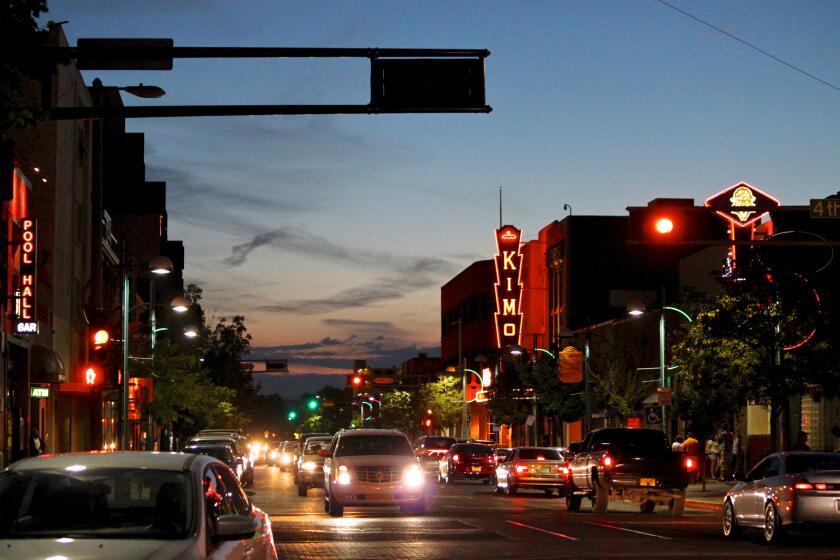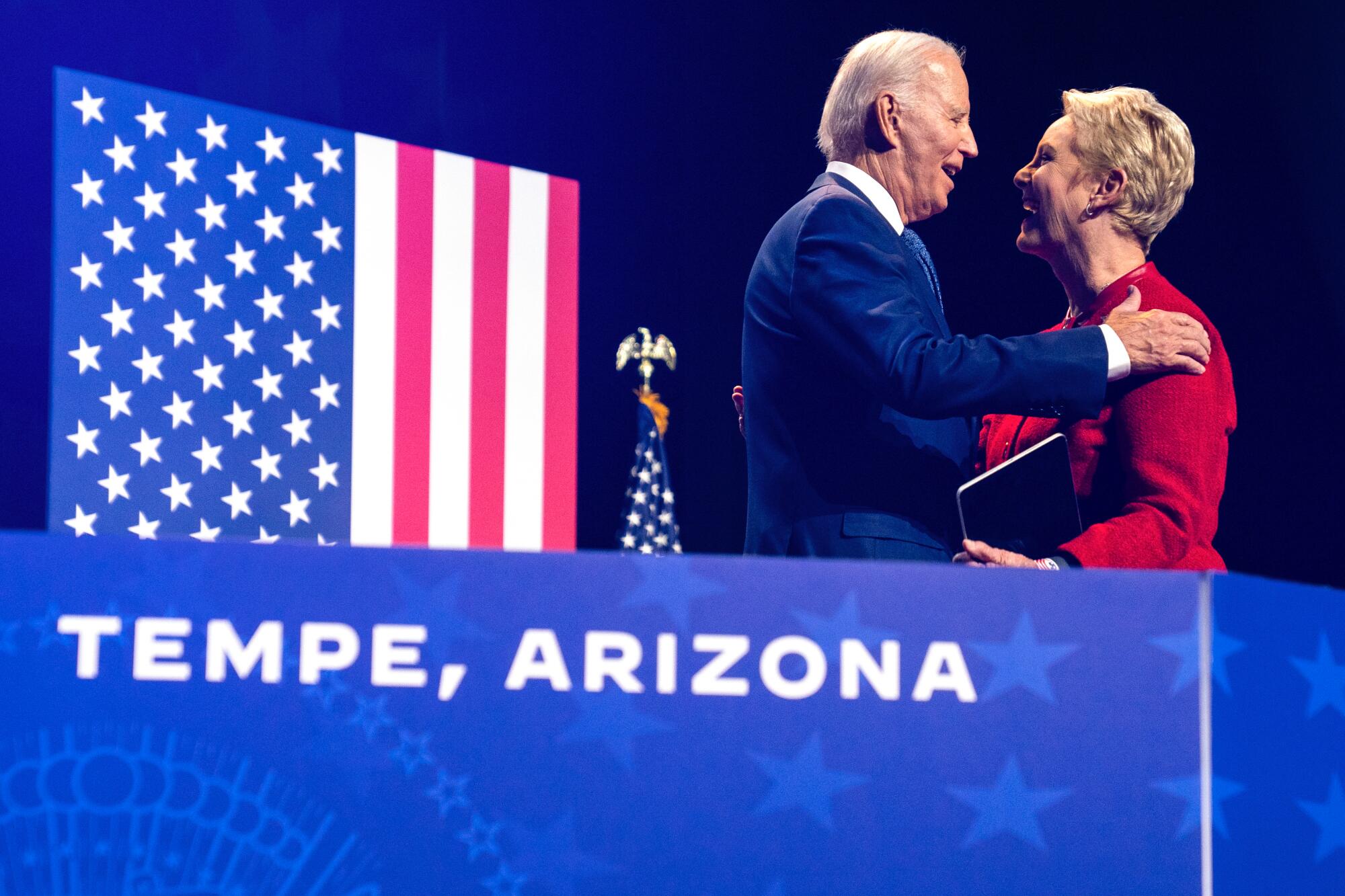
- Share via
MESA, Ariz. — In 2016, Jenny Richardson voted Republican for president, as she had in every presidential election for decades.
She appreciated Donald Trump’s status as a political outsider and liked the prospect of him remaking the Supreme Court to please social conservatives such as herself.
By 2020, however, Richardson was done with Trump and his incessant mayhem. She voted for Joe Biden, not because she was particularly thrilled with the Democrat but because he wasn’t the obstreperous incumbent.
“I wanted a more conservative court,” Richardson, 54, said on a recent morning when the beastly Arizona summer finally yielded to a temperate taste of fall. “But then, four years later, his behavior was reprehensible to me and I couldn’t support him again.”
The defection of Richardson and others like her in Phoenix’s sprawling suburbs was a ripple that helped turn a tide.
Biden became only the second Democratic presidential candidate since 1948 to carry Arizona and the first since Harry Truman to win Maricopa County, which takes in Mesa and most of the wall-to-wall communities carpeting Phoenix’s Salt River Valley.
For much of its history, the West was Republican ground. Today, it’s a bastion of Democratic support, a shift that has transformed presidential politics nationwide. Mark Z. Barabak explores the forces that remade the political map in a series of columns called “The New West.”
Biden’s victory — albeit the narrowest in Arizona history — was part of a broader political transformation across the West, which over the last two decades has turned the once solidly Republican stronghold into a bulwark of Democratic strength.
Over the last several months, I’ve traveled through a half-dozen states — along the Pacific Coast, across the Southwest, into the Rockies — to explore the reasons for the change, which has drastically refashioned the national race for the White House.
Through money and lavish attention, Bill Clinton colored California a lasting shade of blue, dramatically reshaping the nation’s presidential map in the process.
There are commonalities throughout the region. Among them the defection of Republicans like Richardson, who consider the GOP too extreme, and the relocation of Democrats who imported their political affinities from places like California.

Another factor is the rapidly growing Latino population and its expanded political influence, especially here in Arizona, where years of pugnacious policies aimed at immigrants foreshadowed the nativism of Trump’s MAGA movement.
The state is “becoming younger. We’re becoming browner. Diversity is increasing overall,” said Alejandra Gomez, who helped mobilize Arizona’s Latino vote.
Biden also benefited from the timely endorsement of Republican Cindy McCain, widow of the late Sen. John McCain, whose national stature and unflinching independence made him an Arizona icon.
But no single factor can explain Biden’s victory — not when he carried the state by fewer than 11,000 votes out of more than 3.3 million cast.
“Arizona is a microcosm of the country right now,” said Paul Bentz, a GOP pollster in Phoenix, citing its solidly Democratic cities and staunchly Republican rural areas. “Then you’ve got the suburbs, which are like the swing states.”
Whatever the reasons for Biden’s win, the result underscored that Arizona — once politically as blood-red as a desert sunset — has grown highly competitive and showed why the state will again be a top presidential battleground in 2024.

Before there was Donald Trump and his crude talk of Mexican rapists invading America, there was Maricopa County and its swaggering sheriff, Joe Arpaio.
Forcing inmates to wear pink underwear and sleep in surplus Army tents, among other stunts, made Arpaio a big hit with Arizona voters.
Until he wasn’t.
His harsh policies didn’t dramatically reduce crime and the sheriff department’s repeated violations of civil rights ended up costing taxpayers hundreds of millions of dollars in legal settlements.
After 24 years in office, Arpaio was finally ousted in 2016. But not before his actions and the passage of a controversial state law aimed at illegal immigration spawned a Latino backlash — in the same way Proposition 187 helped turn California blue.
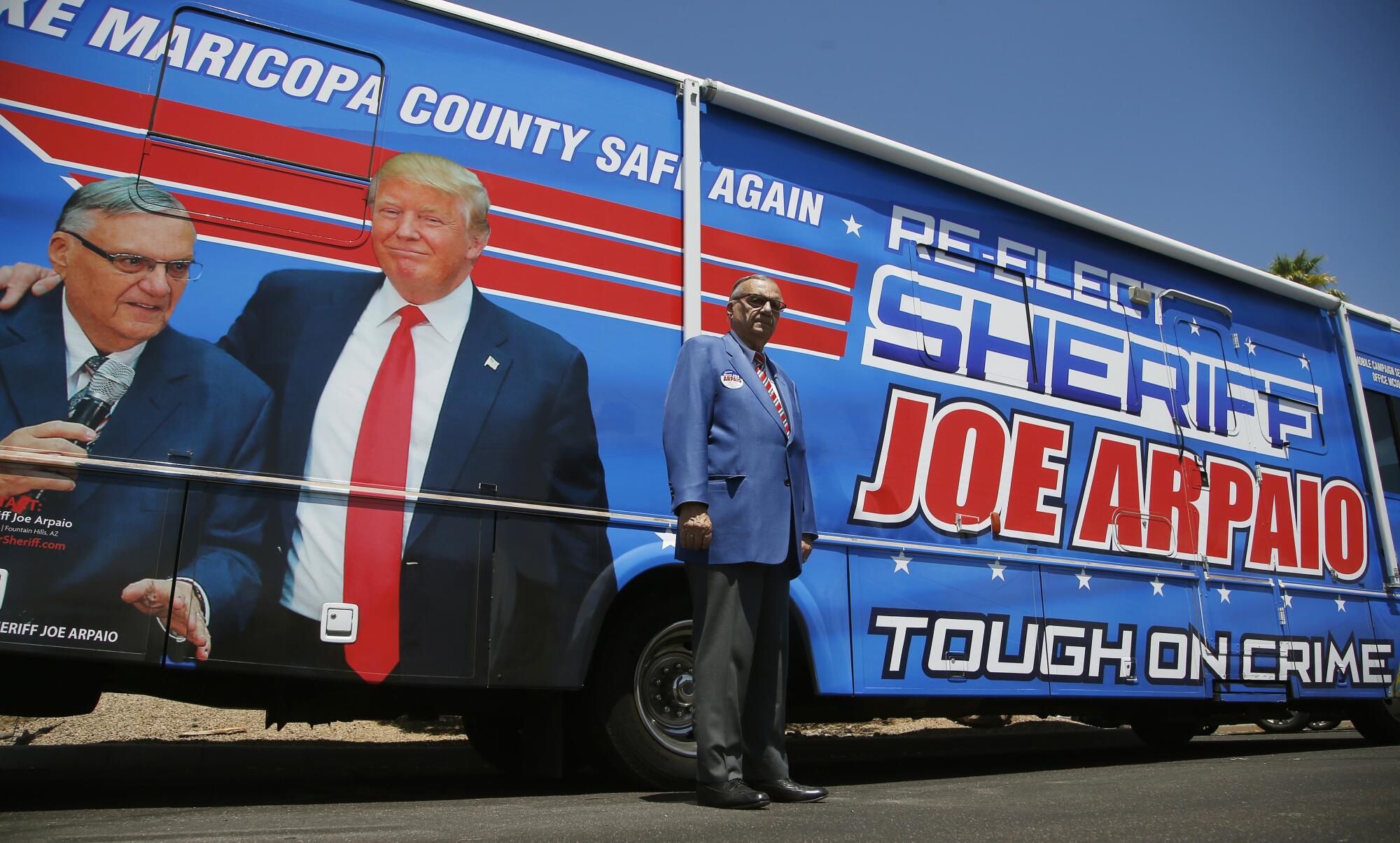
In Arizona, the tinderbox was Senate Bill 1070, a 2010 law that in effect turned police into immigration officers and encouraged racial profiling by targeting individuals based on ethnicity and skin color. (The measure, which critics dubbed the “show-me-your-papers law,” was largely overturned after years of legal challenges.)
Among those moved to political action was Ruben Gallego, an Iraq war veteran who began as a staffer at Phoenix City Hall and now represents the city in Congress. The Democrat is running for a U.S. Senate seat in 2024.
While the crackdown on immigrants animated the GOP’s right wing, “Latinos start[ed] seeing the Republican Party not as the party of McCain but the party of Sheriff Joe Arpaio and all these other crazy guys,” Gallego said. Add Trump to the equation “and it’s a continuation of what Latinos in Arizona had seen for the last decade.”
Latinos make up about one-third of Arizona residents. It is a relatively young population, which means more become eligible to vote each year. Many, like Jacob Martinez, came of age amid Arizona’s incendiary immigration debate.
“I grew up with SB 1070. I grew up with Sheriff Joe Arpaio,” said Martinez, 22, a first-year law student at Arizona State, who watched Trump’s casual bigotry and demonization of immigrants with an unsettling sense of history repeating. “We couldn’t have that at the nationalized level for even a little bit longer.”
In 2020, Martinez cast his first presidential ballot, for Biden.
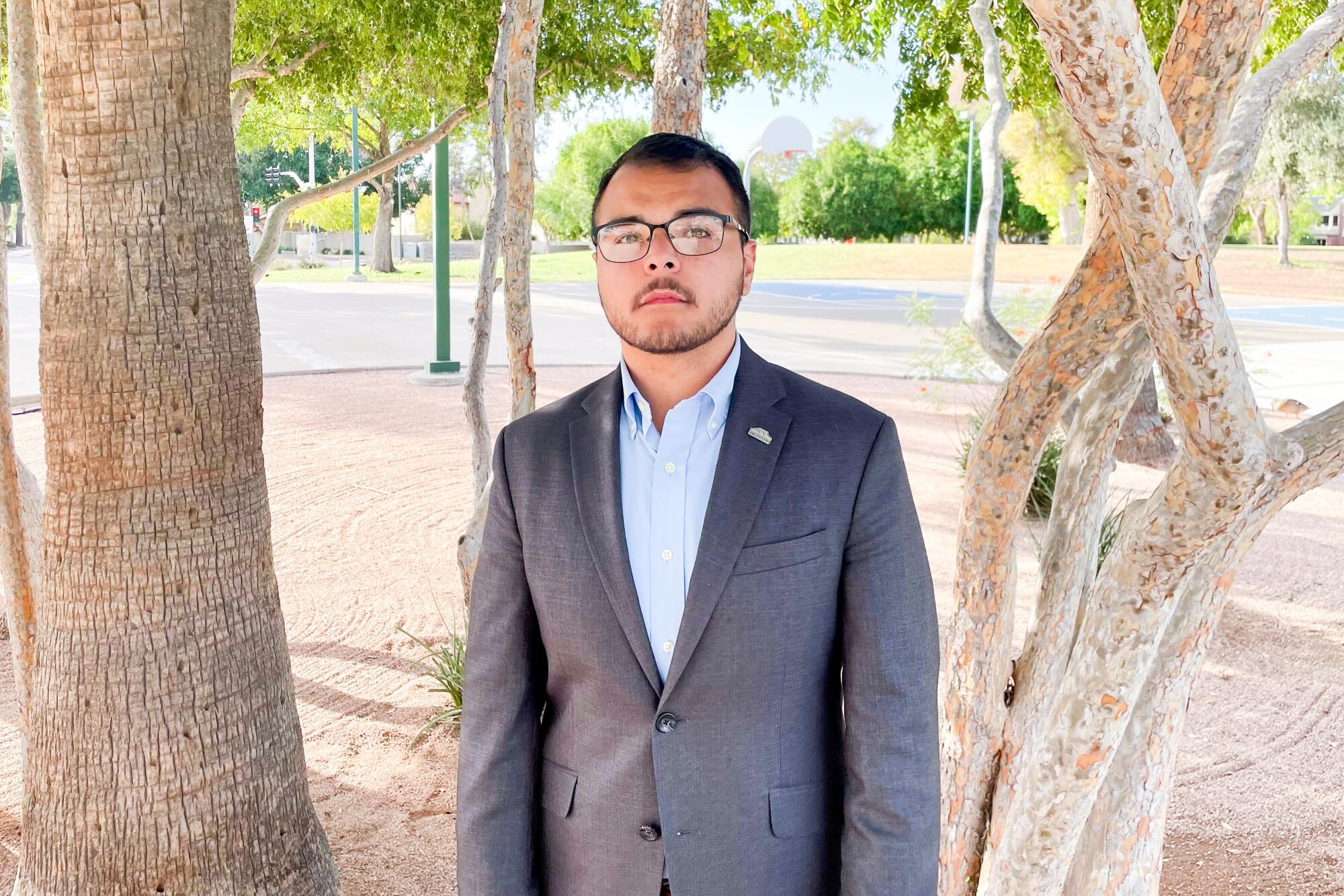
The Democrat won about 6 in 10 Latino votes in Arizona, matching Hillary Clinton’s performance in 2016. Trump won about 37% Latino support, compared with 31% the first time he ran, part of a pattern seen elsewhere across the country.
The difference was the Latino percentage of the electorate, which grew from 15% in Arizona in 2016 to just under 20% in 2020. The result was a net increase in Biden’s vote, helping him eke out victory by less than half a percentage point.
The showing also amounted to a win for grassroots organizations that spent more than a decade registering and mobilizing Latino voters.
New Mexico had been a prime presidential battleground. But the growth of its cities, a Republican shift and heightened Latino influence have made the state deep blue.
One of them, LUCHA, signed up about 20,000 new registrants ahead of the 2020 election and logged millions of voter contacts through phone banks, door-knocking and social media. (The Spanish acronym for Living United for Change in Arizona translates to “fight” or “struggle.”)
While Arizona is diversifying, “without the year-round organizing and mobilizing of Black and brown and Indigenous young people, we would not be where we are now,” said LUCHA’s executive director, Alejandra Gomez, who got her start in politics working against Arpaio.
“Because demographics is not destiny.”

Cindy McCain had finally had enough.
Her late husband loathed Trump — he made no secret of that — and the feeling was mutual.
The Arizona senator said Trump’s positions on national security were uninformed and dangerous. Trump mocked the 5 1/2 years McCain spent as a prisoner of war in Vietnam.
McCain cast the deciding vote against Trump’s effort to repeal Obamacare. Trump sneered he was “never a fan” of McCain and “never will be.”
Two months before the 2020 election — and two years after McCain died of brain cancer — the Atlantic published an article that quoted Trump describing America’s war dead as losers and suckers.
It was, Cindy McCain said, “the final straw.”
Although she hadn’t voted for a Democrat since age 18, Cindy McCain endorsed Biden, citing Trump’s “lack of character, integrity [and] values.” She hoped, in particular, to sway any suburban women who were still fence-sitting.
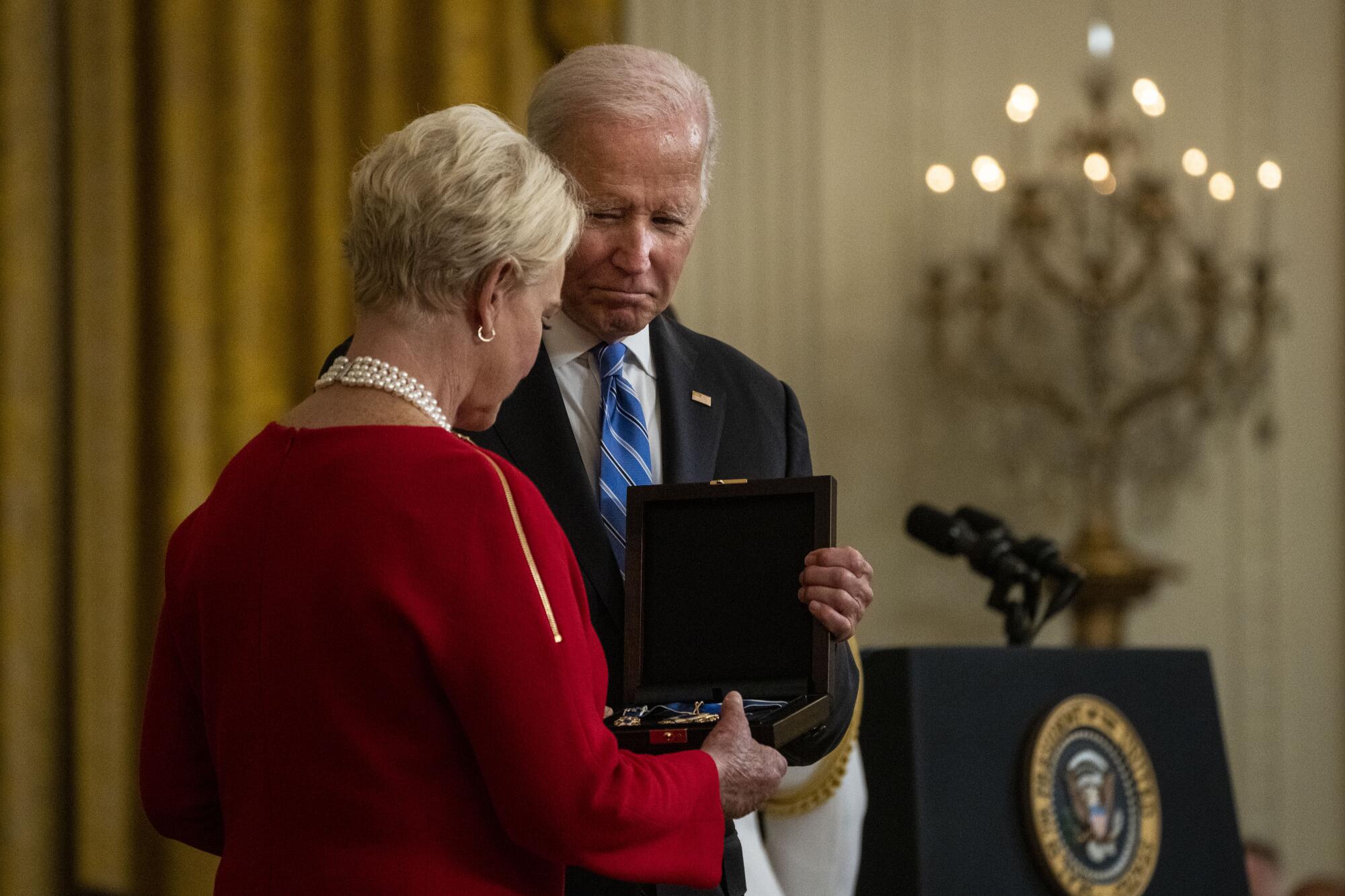
McCain had long feuded with Republican extremists. They picketed his Senate office. They opposed him in primaries.
But in more than three decades, McCain never lost an Arizona election.
He was widely revered not just as a war hero who refused to buckle under torture but also someone whose go-it-alone attitude reflected the state’s broad libertarian streak. “It turned a lot of people off,” Kirk Adams, a former Republican speaker of the Arizona House, said of Trump’s attacks.
Cindy McCain’s endorsement amounted to an invitation, or a kind of permission slip.
“It was a nod that said, ‘Hey, there are people, there are conservatives, that are not OK with Trumpism, that are putting their country over their political affiliation,’” said Yasser Sanchez, a Republican-turned-independent who helped rally Latino support for Biden.
“That was literally John McCain’s thing,” said Sanchez, who keeps a photo of himself smiling alongside the late senator amid a gallery of Republican notables filling his Mesa law office. “Put country over party.”
Cindy McCain didn’t just endorse Biden in a lightning round of TV appearances.
In a 60-second commercial filled with images of the two former Senate colleagues, she spoke directly to the camera and praised the Democrat as someone who would “put service before self” and lead the country with “courage and compassion, not ego.”
She never mentioned Trump, but then she didn’t have to.
Her support may have sealed Biden’s victory.

Arizona is not a solidly blue state, like California or Colorado.
It’s not purple, like Nevada, which remains highly competitive even though it has voted Democratic in the last four presidential elections.
Rather, Arizona is something like a Dr. Seuss character, as Bentz, the GOP pollster, put it. The state is red, with purple spots.
(Significantly, those purple spots are located in and around Phoenix and Tucson, where the vast majority of Arizona voters live.)
That permutation is enough to convince Republicans that Biden’s exceedingly close victory was something of an anomaly in what, they believe, is still a fundamentally conservative, center-right state.
Democrats are just as certain that 2020 was the first step toward a lasting shift and it’s only a matter of time until Arizona, with its changing population, turns as reliably blue as many of its Western neighbors.
The result in 2024 will indicate which is closer to the truth.
More to Read
Get the latest from Mark Z. Barabak
Focusing on politics out West, from the Golden Gate to the U.S. Capitol.
You may occasionally receive promotional content from the Los Angeles Times.


